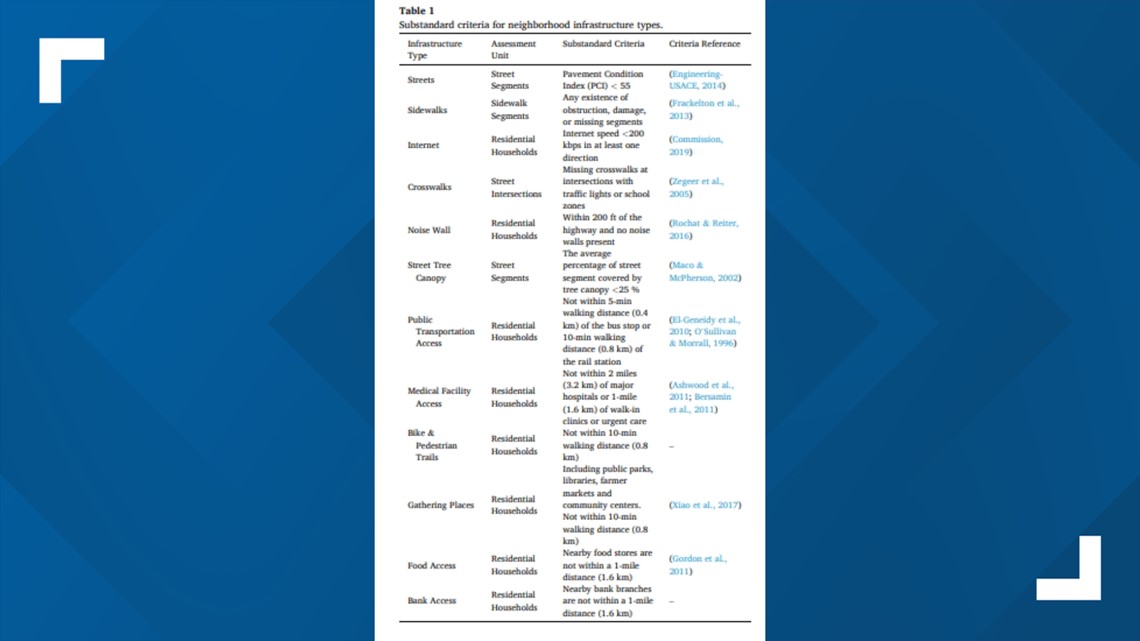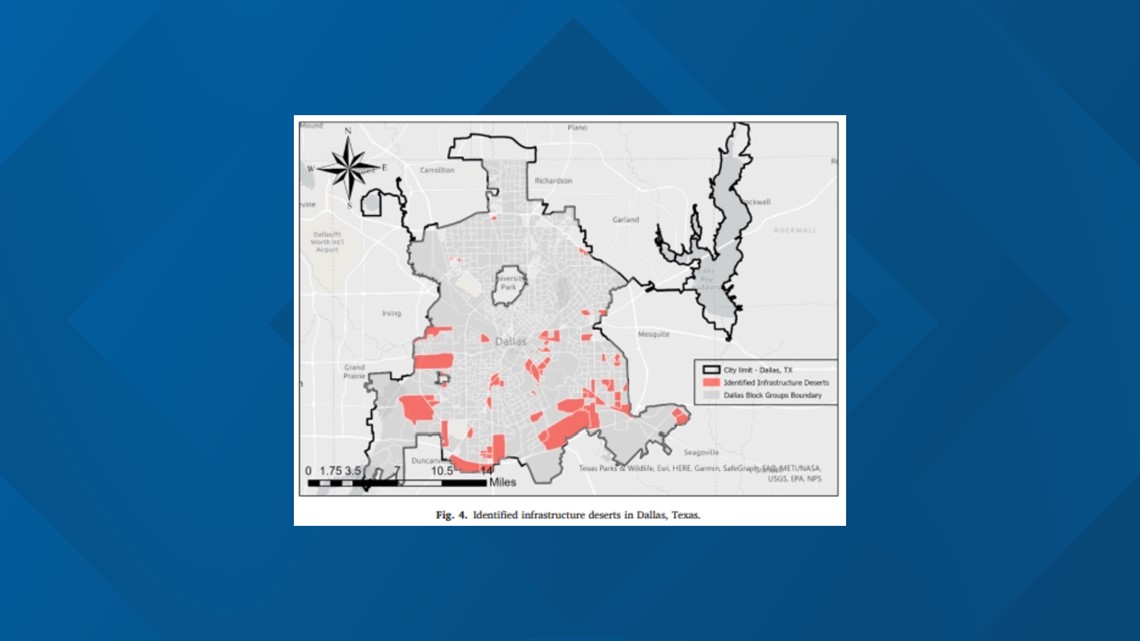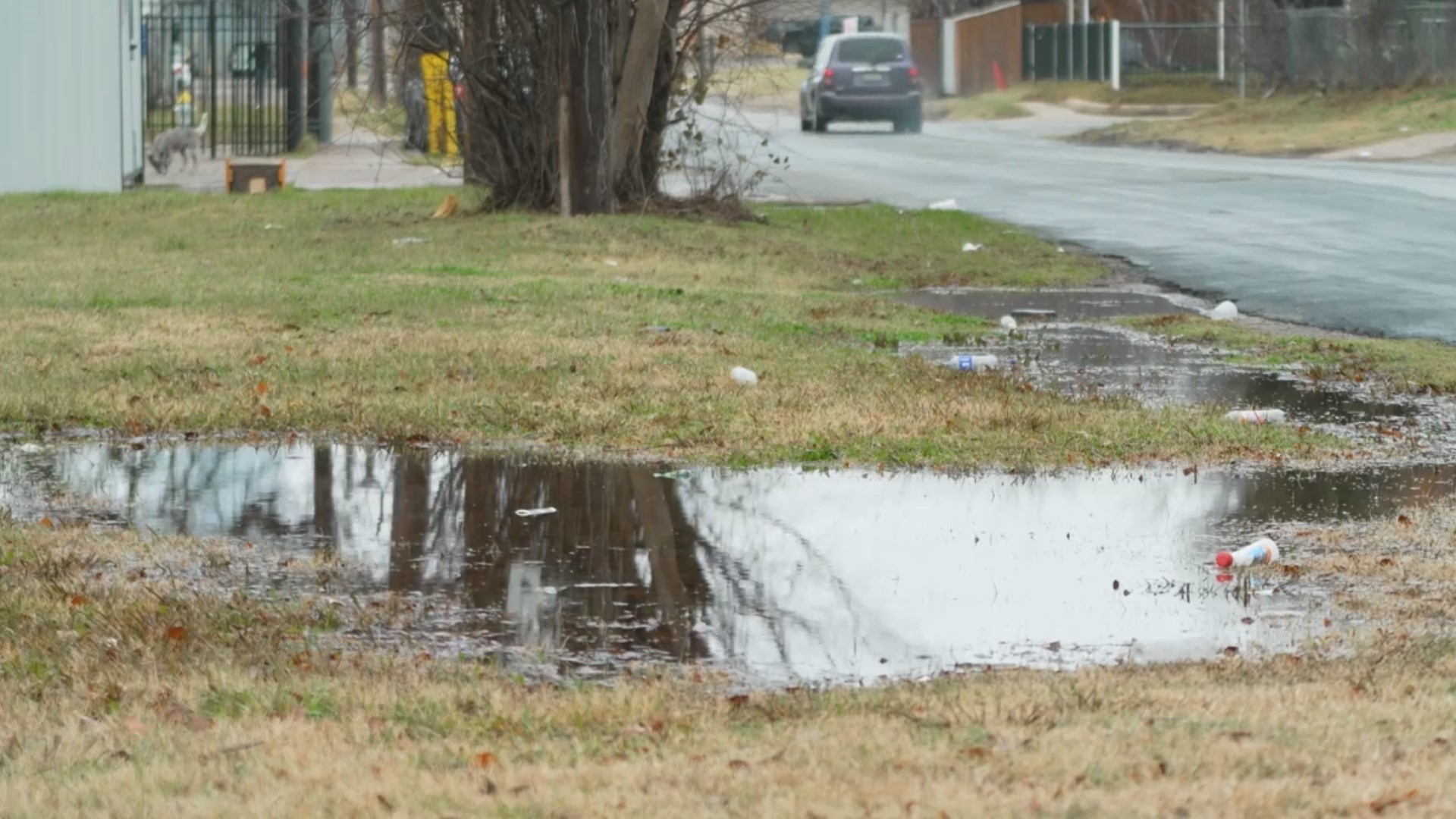DALLAS — Albert Myles said he is a simple man. “That’s it, simple. Simple life,” said Myles. However, his health is anything but simple.
“I have COPD. I also had two knee surgeries. I have arthritis in my spine, carpal tunnel, and I have a heart condition,” said Myles.
With all those ailments dragging him down, WFAA followed the 67-year-old on his routine journey to the doctor starting at his South Dallas home on Cleveland Street to Ross Avenue in Old East Dallas.
It is a five-mile trip that takes Myles about an hour. It is long not just because of his health, but because of the health of his neighborhood. “No sidewalk,” said Myles.
WFAA asked, “What do you do when it’s muddy or wet?”
Myles said, “You’ve got to walk in the street.”
It is what others have done too. They cross intersections with faded to no crosswalks at all.
“They talk about it, but nothing changes,” said Myles as he waited for his bus.
That wait only makes matters worse for Myles who was in pain by that time. “It’s just the area,” said Myles. “They say it’s going to get better. We don’t know.”
Southern Methodist University Professor Barbara Minsker hopes it will get better. She and her students have identified what they call infrastructure deserts.
“An infrastructure desert is a low-income neighborhood that has deficient infrastructure relative to the rest of the city,” said Minsker.
She talked about the issues in South Dallas’ Jubilee Park neighborhood.
“That sidewalk is totally useless if it’s not continuous,” said Minsker.
Her study collected data from 2018 to 2019 on 12 infrastructure types. Those categories are streets, sidewalks, internet, crosswalks, noise walls, tree canopy, public transportation, medical access, bike and pedestrian trails, gathering places, food access, and bank access.




“At that time, there were 62 infrastructure deserts around the city,” said Minsker. “Most of them are in southern western and western Dallas… Raising funds for the two bridges across the Trinity, you could do sidewalks probably for the whole city for that amount.”
Minsker’s study gained the attention of the City of Dallas including Deputy Mayor Pro Tem, Carolyn King Arnold, who represents District 4.
“To put a word on it and it says equity,” said King Arnold. “Most of these communities have been systematically underserved because of previous practices whereby we failed to fund those projects so that there would be equity…When you look at a community that does pay property taxes and our sales taxes, any way you go, money is being filtered from that particular community to the City of Dallas to our general fund…I believe it is only fair that they’re able to get something out of the deal.”
It is a deal that puzzles Myles who one hour and two buses later is still in pain. After arriving in Old East Dallas, WFAA asked if he was worried about sidewalks and crosswalks there.
“No, because they’re in these areas,” said Myles.
Minsker and her students are working to update data from their study to see if any issues have changed.
Editor's note: An earlier version of this article misidentified the number of infrastructure deserts across the City of Dallas as 12 instead of 62. We regret the error.

